An ongoing art show at a SoBo gallery attempts to erase the stigma attached to mental health issues through artworks that highlight and try to normalise their existence
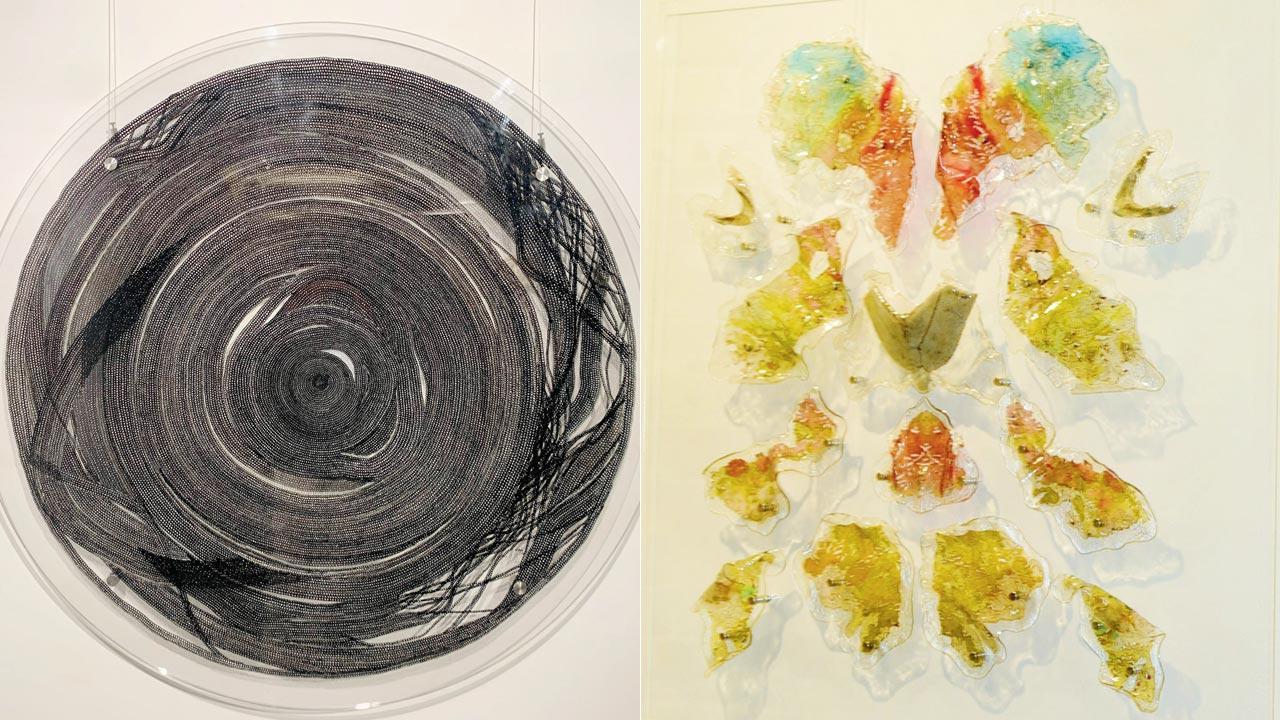
Gyres by Meera George. Pic/Dr Arshiya Lokhandwala; (right) artwork by Starlyn D’Souza
Often mental health conversations are stifled by the stigma around words like depression, anxiety, paranoia, and bipolar disorder. Art-historian and curator, Dr Arshiya Lokhandwala, adds that such conversations require a safe space but people are quick to judge, making it hard for anyone to seek help. In curating I want tomorrow, the ongoing exhibition at Kamalnayan Bajaj Hall and Art Gallery, she highlights the need to break the silence, explaining, “The title is an affirmative statement — the first step to getting better. We all have to deal with our mental health. No one is off the spectrum.” The works on display by eight artists, are a step in this direction.
ADVERTISEMENT
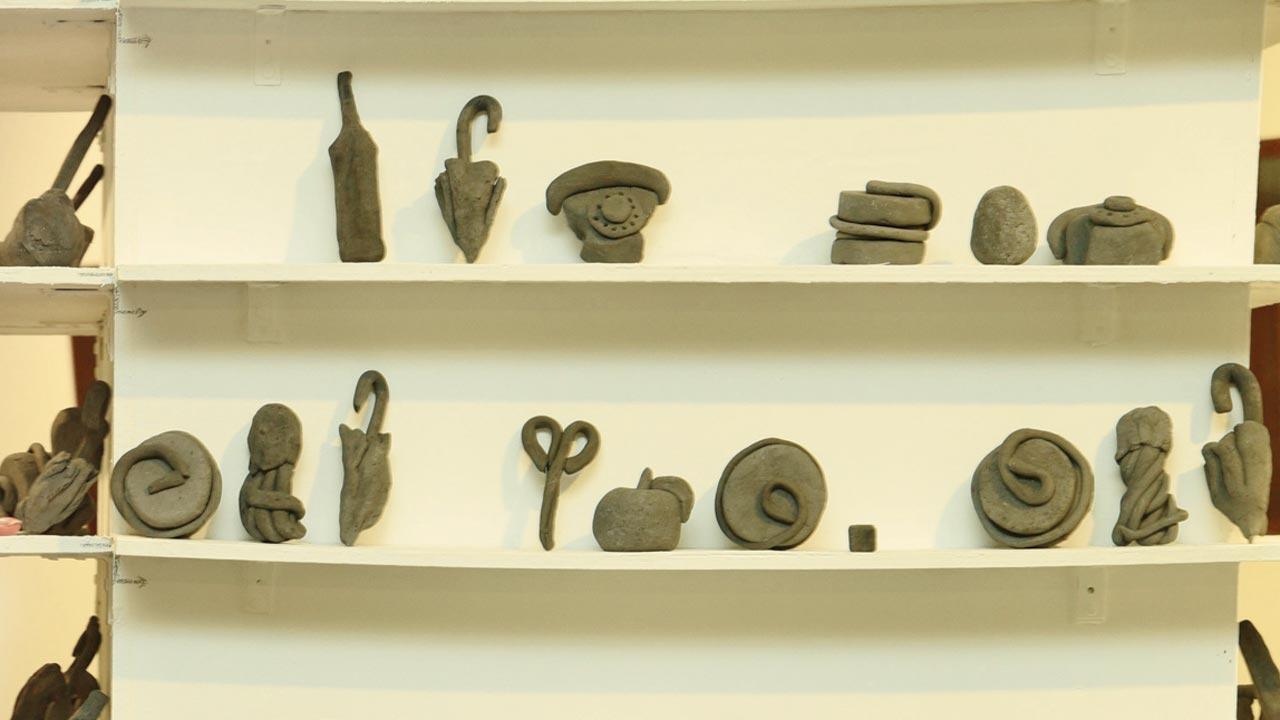 Artwork by Poonam Jain. Pics/Atul Kamble
Artwork by Poonam Jain. Pics/Atul Kamble
Artist Meghna Singh Patpatia’s illustrations of shells, and installations of keys in glass spheres reflect the experience of retreating, isolation and being left to our own devices to deal with anxieties; particularly in the context of the pandemic — especially after we see a 25 per cent increase in the global prevalence of anxiety and depression, according to a brief by the World Health Organisation released on March 2. The sculptures by artist Starlyn D’Souza take symmetrical shapes inspired by Rorschach’s inkblot tests offering a start for viewers to explore their thoughts and interpretations to highlight the uniqueness of an individual’s mind. And finally, artist Mithu Sen voices her own anxieties about self-plagiarism and authenticity as an artist, igniting the conversation for viewers.
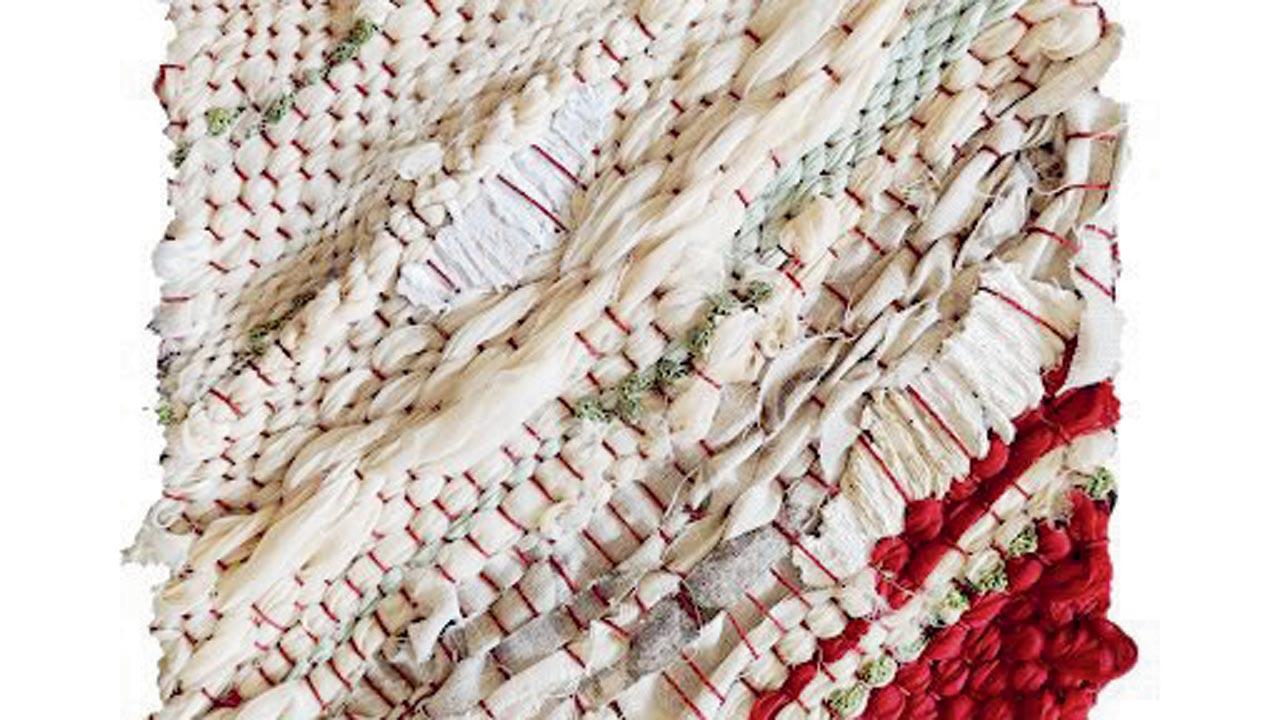 Continuous Conversations 4 by Al-Qawi Tazal Nanavati. Pic/Dr Arshiya Lokhandwala
Continuous Conversations 4 by Al-Qawi Tazal Nanavati. Pic/Dr Arshiya Lokhandwala
Dr Lokhandwala says, “I hope the show mobilises us to speak up, learn to be inclusive, recognise patterns of behaviour in ourselves and others, and reach out for help.”
Some of the artists whose works are part of this show, share what they’ve voiced through their work and how it has helped them.
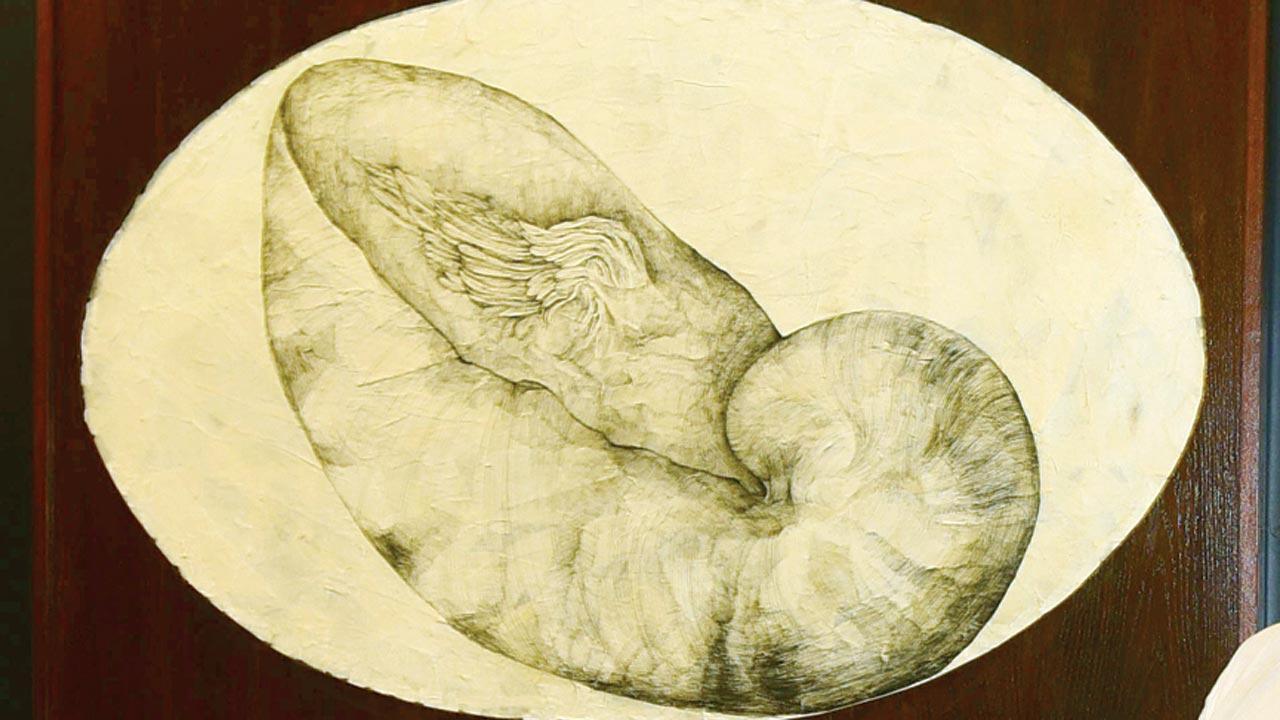 Artwork by Meghna Singh Patpatia
Artwork by Meghna Singh Patpatia
Living memories
Al-Qawi Tazal Nanavati, artist, Mumbai
My artworks represent the memories of my late mother, Mumtaz, that I want to preserve forever. I used to talk to my mom every day before she passed, so when she left there was a magnanimous void. Doing or making anything seemed like I was creating new memories without her, but life has to go on. I started making artworks to overcome grief, and writing letters to her to preserve memories. Slowly, the letters started including her things, to feel her physical presence again. These artworks are made using her clothes. They are letters I’ve written to her in a secret script that holds many emotions one cannot pen down.
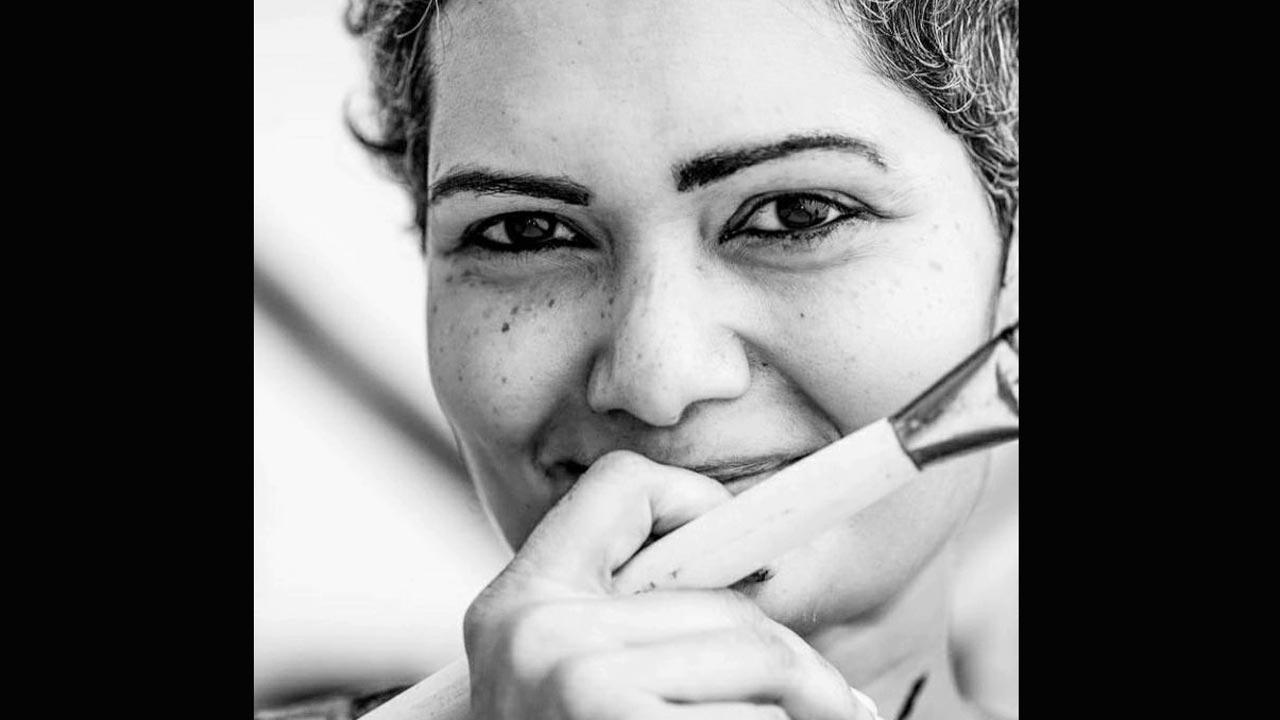 Meera George
Meera George
Preservation in my own hands
Meera George, contemporary mixed media and performance artist, Pune
Ophelia is a video performance about a woman’s search for a place to rest as she goes through mundane life. Today, as a working woman and mother of two, I often find myself seeking those moments of peace and solitude. The artworks, Defrost and Gyres, express states of self-preservation and coping mechanisms when faced with challenges of the mind. The artworks exhibit an obsession for drawing circles, as a tool to still thoughts.
Freedom through art
Poonam Jain, artist, Mumbai
The necessity of creating comes from the urge to unlearn and unburden, to gain a sense of freedom from reality, even if it is temporary. It is to understand the surroundings in a way that is not preconditioned by institutions that we often find ourselves in.
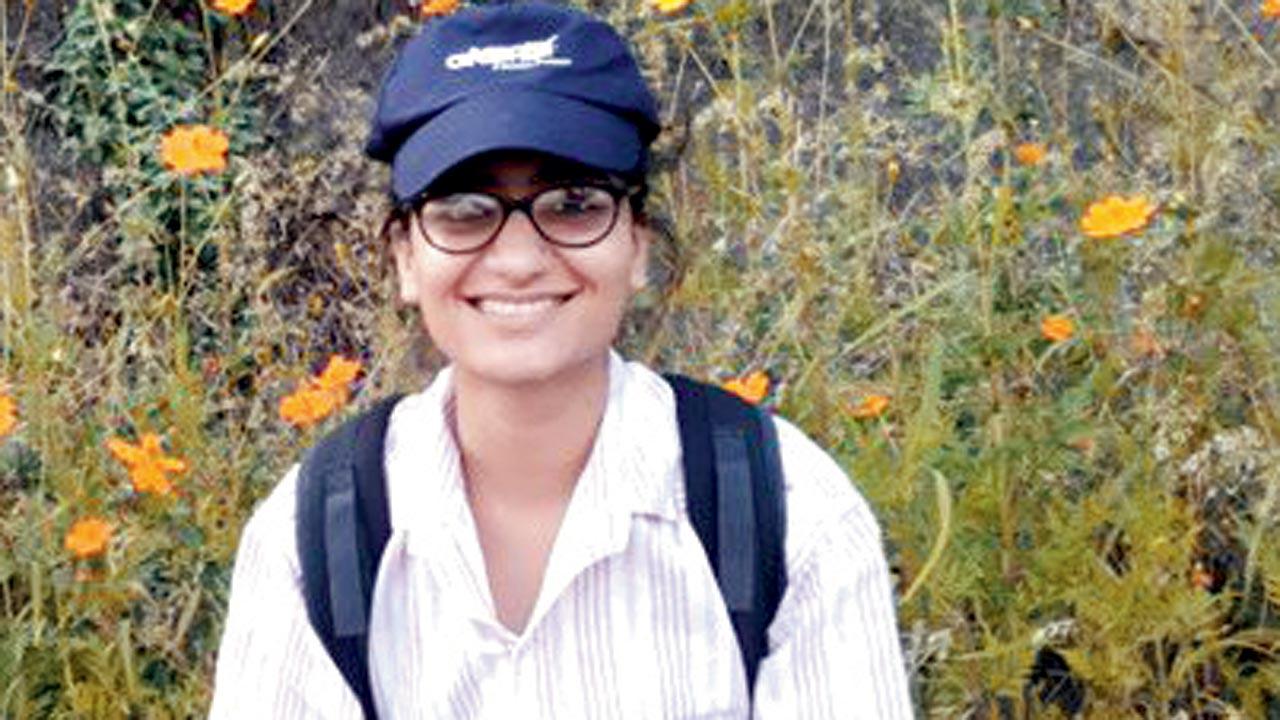 Purvi B Sharma
Purvi B Sharma
A fine balance
Purvi B Sharma, artist, Ahmedabad
I wanted to show the complexity and fragility of the mind through patterns. As mental health is invisible, we may ignore or suppress it. So, channelling emotions in the right way is important. Creating art helps me maintain my peace as the process becomes very meditative. It’s about finding oneself amidst this chaos. In my artwork, the patterns showcase a balance between structure and imbalance in the same way that our mind has peace and chaos within.
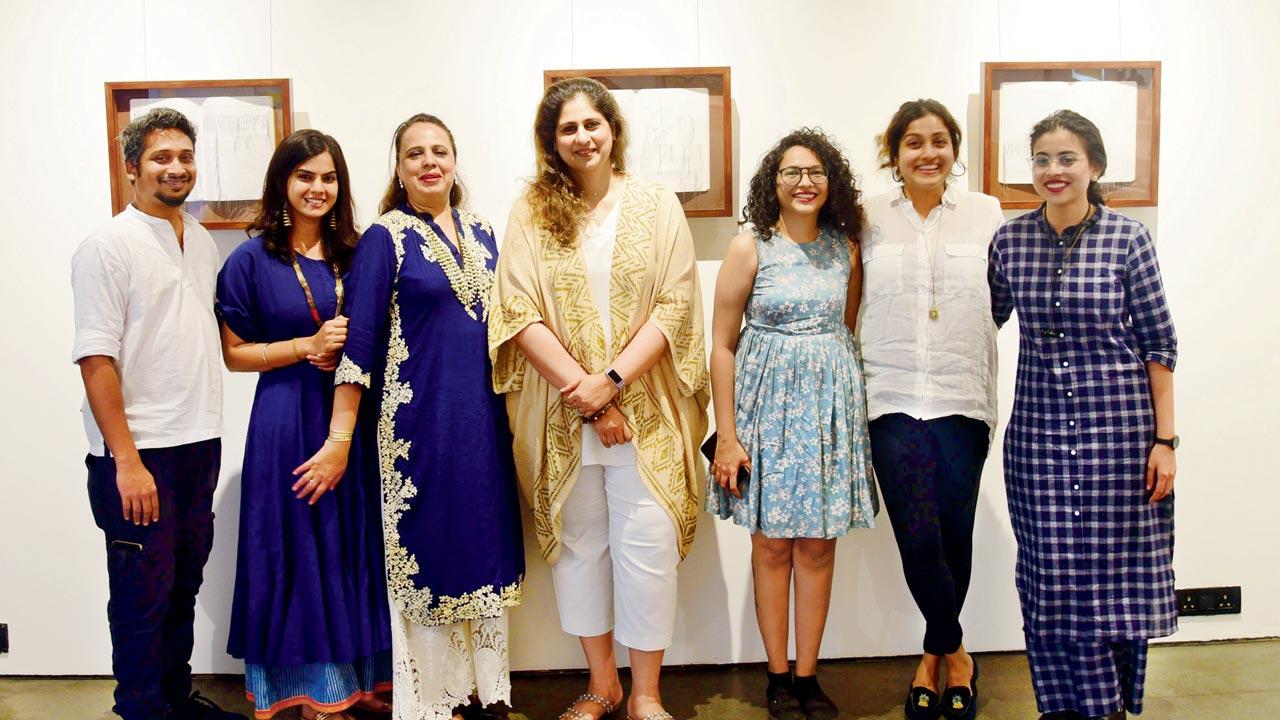 Starlyn D’Souza, Al-Qawi Tazal Nanavati, Dr Arshiya Lokhandwala, Sunaina Kejriwal, Poonam Jain, Meghna Singh Patpatia and Saviya Lopes
Starlyn D’Souza, Al-Qawi Tazal Nanavati, Dr Arshiya Lokhandwala, Sunaina Kejriwal, Poonam Jain, Meghna Singh Patpatia and Saviya Lopes
Woven strength
Saviya Lopes, visual artist, Vasai
My art holds perspectives of emotional labour that falls disproportionately on women. Quilts and handkerchiefs are pieces of textile which provide comfort, refuge, warmth and protection. They act as a symbolic shelter against the trials and tribulations that range from personal to political. While the outcome is a beautiful quilt, the process highlights sustaining emotional labour, and is a counter to being silenced. Sewing helps me to navigate emotions and memories. The act enables me to reclaim solitude.
Till April 27
At Kamalnayan Bajaj Hall & Art Gallery, Bajaj Bhavan, Nariman Point.
Free
It’s all in your mind, so let’s get it out
 Jasmine Kaur Ahluwalia, therapeutic movement facilitator and expressive arts therapy practitioner
Jasmine Kaur Ahluwalia, therapeutic movement facilitator and expressive arts therapy practitioner
What is it?
Expressive Arts Therapy is using art — making, movement, music, to self-express, gain insight, and establish mind-body connection. Aesthetics are not of primary focus; the process of making or engaging with art matters.
How does it help?
1. Uncomfortable experiences like anxiety can make us less present. Art-making can bring back mindfulness to focus on the needs of the mind
and body.
2. As a means to express unconscious thoughts that might influence our thinking and behaviour covertly.
3. Watching others’ art can help explore shared human experiences and, thereby, our own vulnerabilities.
4. What therapy one needs depends on several factors. Opt for art therapy alone, or combine modes of therapy. It is important to seek professional help and evaluate options.
What can I do?
When you feel overwhelmed, try drawing or scribbling. It doesn’t have to look good; it just needs to mirror how you feel at the moment. Feel the different strokes and textures. This can be a good way to externalise your emotions and relieve any stress.
 Subscribe today by clicking the link and stay updated with the latest news!" Click here!
Subscribe today by clicking the link and stay updated with the latest news!" Click here!








